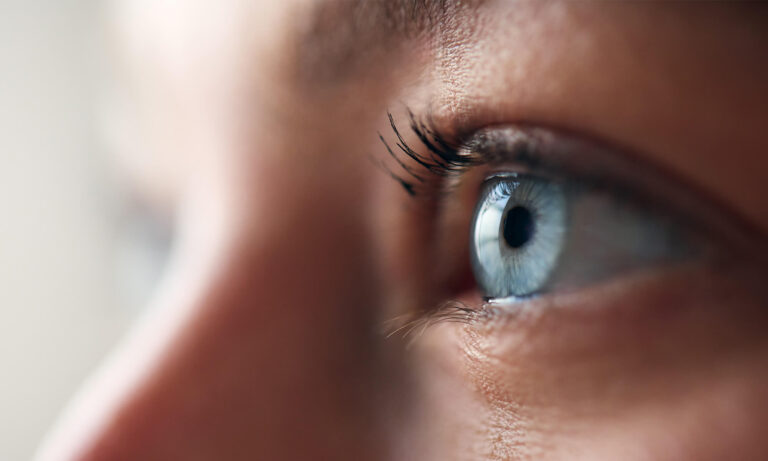Foggy vision in one eye can be a concerning and disorienting experience. This condition, characterized by a blurred or cloudy appearance in just one eye, can affect your ability to see clearly and might impact your daily activities. Understanding the causes, symptoms, and treatment options for foggy vision in one eye is crucial for maintaining your eye health and overall well-being. This comprehensive guide aims to provide detailed insights into this condition, helping you recognize the signs, understand the potential underlying causes, and explore possible treatments.
What is Foggy Vision in One Eye?
Foggy vision in one eye refers to a situation where the clarity of vision in one eye is diminished compared to the other. This fogginess can vary from mild to severe, and it often presents as a blurry or hazy view through the affected eye. Unlike double vision or complete blindness, foggy vision does not necessarily mean that you cannot see anything at all, but it does affect the sharpness and clarity of your sight.
Recognizing the Symptoms
The symptoms of foggy vision in one eye can vary depending on the underlying cause. Common signs include:
- Blurriness: The affected eye may have trouble focusing, making it hard to see fine details.
- Cloudiness: Objects might appear as though they are seen through a foggy window.
- Difficulty Seeing at Night: Vision might be more affected in low-light conditions.
- Distorted Vision: Straight lines may appear wavy or bent.
- Eye Discomfort: Some people experience irritation, dryness, or a feeling of heaviness in the affected eye.
If you notice any of these symptoms, it’s important to seek medical advice to determine the cause and appropriate treatment.
Common Causes of Foggy Vision in One Eye
Foggy vision in one eye can be caused by a variety of factors, ranging from minor issues to more serious conditions. Understanding these causes can help in identifying the right course of action.
1. Refractive Errors
Refractive errors occur when the eye does not properly focus light, leading to blurred vision. Common types include:
- Myopia (Nearsightedness): Difficulty seeing distant objects clearly.
- Hyperopia (Farsightedness): Difficulty focusing on close objects.
- Astigmatism: Distorted vision due to an irregular cornea or lens shape.
Refractive errors can affect one eye more than the other, leading to foggy or blurry vision in the affected eye.
2. Cataracts
A cataract is a clouding of the lens inside the eye, which can cause foggy or blurry vision. Cataracts typically develop slowly and can affect one eye more than the other. Symptoms include:
- Blurry or dim vision
- Glare and halos around lights
- Difficulty seeing at night
Cataracts are more common in older adults, but they can also occur due to other factors such as injury or certain medications.
3. Macular Degeneration
Macular degeneration is a condition that affects the central part of the retina, known as the macula. It can cause:
- Loss of central vision
- Blurred or distorted vision
- Difficulty reading or recognizing faces
There are two types: dry and wet macular degeneration, with the latter being more severe and requiring immediate attention.
4. Retinal Detachment
Retinal detachment occurs when the retina separates from the back of the eye. It is a serious condition that can lead to permanent vision loss if not treated promptly. Symptoms include:
- Sudden flashes of light
- Floaters or shadows in the vision
- A curtain-like shadow over part of the vision
Immediate medical attention is required to prevent further damage.
5. Eye Infections
Infections such as conjunctivitis (pink eye) or uveitis can cause foggy vision. Symptoms often include:
- Redness
- Swelling
- Discharge
- Pain or discomfort
Proper diagnosis and treatment by an eye care professional are necessary to resolve these infections and restore clear vision.
6. Glaucoma
Glaucoma is a group of eye conditions that damage the optic nerve, often due to increased intraocular pressure. It can cause:
- Gradual loss of peripheral vision
- Blurred vision
- Headaches or eye pain
Early detection is crucial, as glaucoma can lead to permanent vision loss if left untreated.
7. Corneal Disorders
The cornea is the transparent layer at the front of the eye. Disorders such as keratoconus or corneal abrasions can lead to foggy vision. Symptoms may include:
- Blurriness or distortion of vision
- Eye redness or discomfort
- Sensitivity to light
Treatment depends on the specific disorder and its severity.
Diagnosing Foggy Vision in One Eye
Accurate diagnosis is essential for effective treatment of foggy vision in one eye. Eye care professionals use various methods to determine the cause, including:
1. Comprehensive Eye Exam
A thorough eye exam includes tests to assess vision clarity, eye pressure, and the health of the retina and cornea. The eye doctor may use tools such as:
- Slit Lamp Examination: To view the structures of the eye in detail.
- Ophthalmoscopy: To examine the retina and optic nerve.
- Visual Acuity Test: To measure how well you can see at different distances.
2. Imaging Tests
In some cases, imaging tests may be required to get a detailed view of the eye’s internal structures. These can include:
- Optical Coherence Tomography (OCT): Provides cross-sectional images of the retina.
- Fundus Photography: Captures detailed images of the retina and blood vessels.
3. Blood Tests
For conditions related to systemic health issues, blood tests may be necessary to check for underlying problems such as diabetes or autoimmune disorders.
Treatment Options for Foggy Vision in One Eye
The treatment for foggy vision in one eye depends on the underlying cause. Here are some common approaches:
1. Refractive Error Correction
For refractive errors, corrective lenses such as glasses or contact lenses can improve vision clarity. In some cases, refractive surgery like LASIK may be an option to permanently correct the error.
2. Cataract Surgery
If cataracts are causing foggy vision, cataract surgery can remove the cloudy lens and replace it with a clear artificial lens. This procedure is generally safe and effective.
3. Management of Macular Degeneration
Treatment for macular degeneration may include medications, laser therapy, or dietary changes to slow the progression of the disease. Regular monitoring by an eye specialist is crucial.
4. Retinal Detachment Surgery
Retinal detachment requires prompt surgical intervention to reattach the retina and prevent further vision loss. Various surgical techniques, such as vitrectomy or scleral buckle, may be used depending on the case.
5. Treatment of Eye Infections
Eye infections are typically treated with antibiotics or antiviral medications, depending on the type of infection. Proper hygiene and avoiding contact lenses during infection are also important.
6. Glaucoma Management
Glaucoma is managed through medications to lower intraocular pressure, laser therapy, or surgery. Regular eye exams are essential for monitoring and adjusting treatment as needed.
7. Corneal Disorder Treatments
Treatment for corneal disorders may include medications, special contact lenses, or surgical options such as corneal transplants, depending on the severity of the condition.
Preventing Foggy Vision in One Eye
While some causes of foggy vision cannot be prevented, there are steps you can take to reduce your risk and maintain overall eye health:
1. Regular Eye Exams
Routine eye exams can help detect problems early and ensure that any issues are addressed promptly. Regular check-ups are especially important if you have a family history of eye conditions or existing health issues.
2. Protecting Your Eyes
Wear protective eyewear when engaging in activities that pose a risk to your eyes, such as sports or working with hazardous materials. Sunglasses with UV protection can also help prevent damage from sun exposure.
3. Healthy Lifestyle Choices
Maintain a healthy diet rich in vitamins and antioxidants, which are beneficial for eye health. Regular exercise, avoiding smoking, and managing chronic conditions like diabetes can also support good vision.
4. Proper Contact Lens Care
If you wear contact lenses, follow proper hygiene practices, and replace them as recommended to avoid infections and complications.
Conclusion
Foggy vision in one eye can be a symptom of various underlying conditions, ranging from common refractive errors to more serious eye diseases. Recognizing the signs, understanding potential causes, and seeking appropriate medical care are crucial steps in addressing this issue and maintaining clear vision. If you experience any symptoms of foggy vision, consult with an eye care professional to determine the cause and receive the necessary treatment. By staying informed and proactive about your eye health, you can work towards ensuring a brighter and clearer visual future.













